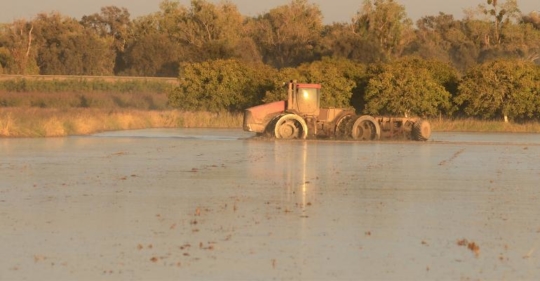Explore our blog featuring articles about farming and irrigation tips and tricks!
Don’t Rush In Assessing Equipment Affected By Flooding

By: Tyler Harris
At the peak of the flood events in March, more than 75% of Nebraska counties had declared an emergency because of flooding. After the floodwaters receded, they revealed damaged bridges and roads, and sand and silt deposited on fields. But what about equipment?
Ron McClain, director of appraisals, pricing and sales support at BigIron Auctions, and regional manager for BigIron’s eastern expansion areas, has seen several natural disasters in his 30 years in the auction business. He notes a few key steps in assessing equipment affected by flooding.
“The biggest thing I think is to not rush to judgment too quickly,” McClain says. “Take a look at the equipment. Don’t rush to judgment. You can do more damage by firing up a machine that’s been underwater without checking every function that should be in working order.”
Of course, it’s important to document any damage on equipment — which will be needed for disaster relief assistance, insurance purposes or warranties. Also, it goes without saying that it’s best to consult your dealer for anything beyond the operator’s knowledge.
“It might be best to schedule a mechanic visit that can determine whether the equipment is fit to use,” McClain says. “Once that is discussed, they can determine whether the warranty is still in force, or whether the warranty is void due to flood damage.”
Stay up to date on all T-L news and get alerts on special pricing!


